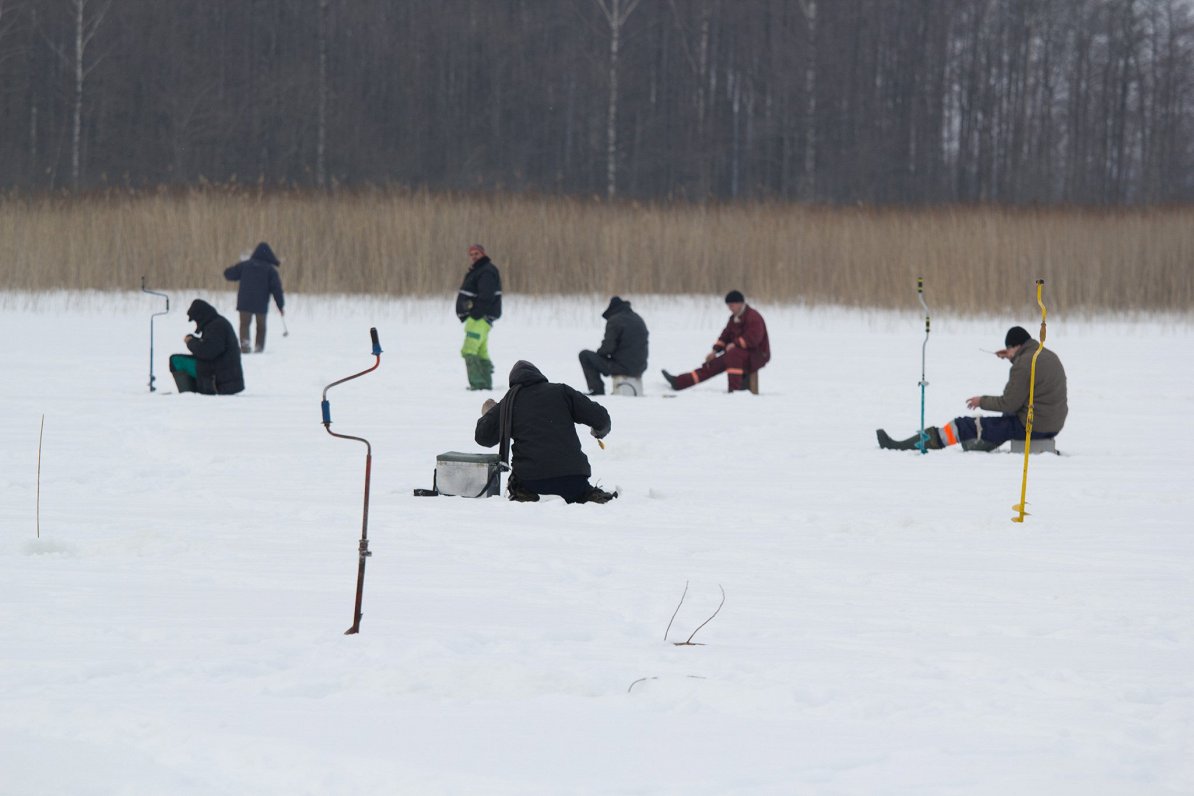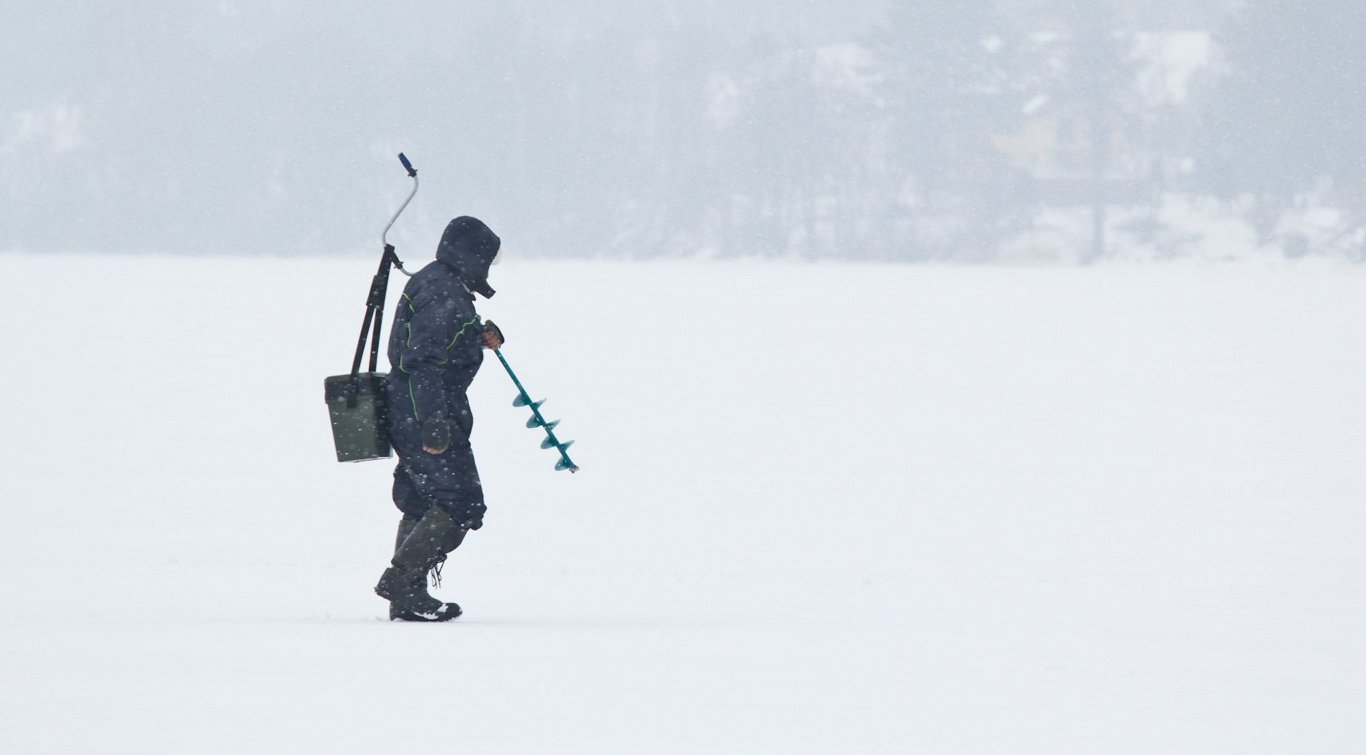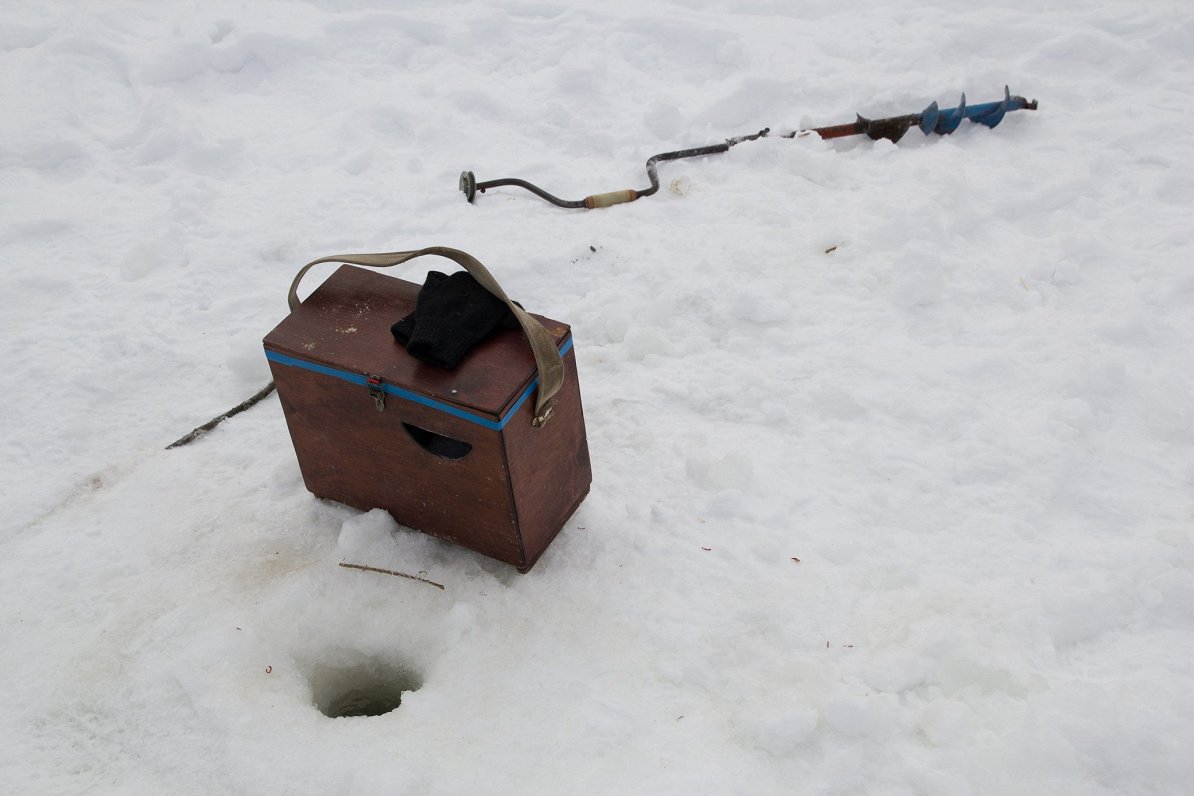However, the appetite for angling can prove fatal in far too many cases. Already 17 dead bodies have been pulled from the ice this winter, along with some who made it out with their lives. Even cars have fallen into the water after ill-advised stunt driving on frozen bodies of water.
So keen are some people to enjoy what winter has to offer, they frequently forget even basic safety precautions, according to Major Valdis Straume, Deputy Commander of the Latgale Region Brigade of the State Fire and Rescue Service (VUGD).
“The calls begin as the first islands of ice appear and the first ice is formed. Reckless people pour onto the ice, usually they are ice anglers... Every angler thinks that it won't break for him, that nothing will happen to him, and if it breaks, then he will be able to crawl back, but for an untrained person, crawling without special equipment is very difficult and people should be properly prepared,” says Straume.

The recklessness of some fishermen was also recounted by Normunds Grabovskis, a professional angler and creator of a television show about fishing. He pointed out that people often have a misconception about the thickness and stability of the ice. The fact that there has been a long period of frost does not necessarily mean that it is safe to climb on the ice.
"People nowadays are moving away from nature, from natural processes. If people in the countryside still face it, then the city dulls the instinct of self-preservation in people. I myself witnessed this twice this winter - one was in Dzirnezers, right here near Rīga, where it was frozen all week, and rumors got around that there was good ice. In parts, the ice was good, but away from those places, there was only 3-4 cm under the snow . I some some old guys and said, "Watch out!" A couple more passed a hundred meters further on and fell in. Luckily they were pulled out," said Grabovskis.
Difficult to stop
Currently in Latgale you can see a fisherman on almost every lake. For Daugavpils residents, Lake Stropu is particularly popular and attracts dozens of anglers.
Specialists of the Daugavpils Public Utilities Board inspect the city water bodies, check the thickness of the ice and when it is not safe, an order is issued with a ban on being on the city water bodies. Compliance with the regulations is controlled by the municipal police.
According to the State Fire and Rescue Service, where control takes place and ice thickness is measured, the number of accidents is lower. Similar procedures exist in other Latvian municipalities, but not in all.
Five years ago, amendments to the law were adopted, which allow local governments to impose bans on the ice, but this is not an obligation for local governments, explained Maigurs Ludboržs, senior rapporteur of the Sector Policy Department of the Ministry of the Interior.
Municipalities have the right, but not the obligation, so there are municipalities where supervision does not take place. Most do not have the resources, for example, in Rēzekne region.
"We do not have a municipal police, we do not have an administrative inspectorate, we do not have controlling institutions, everyone has their own responsibility," admitted Jānis Troška, the executive director of Rēzekne municipality.
Also in Ludza region, where an ice fisherman was rescued due to a happy coincidence at the beginning of winter, supervision by the municipality does not take place, confirmed Sergejs Jakovļevs, executive director of Ludza region council: "Unfortunately, we have neither the police nor the inspectors, and we rely on the support of the State Police. There are five lakes in the territory of Ludza, and we honestly have not monitored the thickness of the ice so far.”

There is an Administrative Inspectorate in the city of Rezekne, but there are no specialists who can determine the thickness of the ice, said Pāvels Savickis, the head of the Administrative Inspectorate of Rēzekne City Municipality.
"We have no specialists who can determine when it is dangerous to be on ice any more than the anglers can," Savickis said.
Controls are called for
Could the introduction of a rule obliging municipalities to monitor the ice thickness of water bodies in their territory and impose a ban on going on the ice, be a solution to prevent tragic events? The State Fire and Rescue Service thinks so.
"The thickness of the ice should be determined and monitored more closely, and additional provisions could be made for anglers to carry, for example, ice sticks with which they could at least try to escape, as they cost no more than five euros - it is nothing compared to the cost of a human life,” said the VUGD's Straume. He also cited the need for better education about the risks of going onto the ice and suggested Lithuania could offer an example.
"I have heard that in Lithuania that it is legally established that you can go on the ice only from the thickness of 7 centimeters, you can't be drunk on the ice, there is an immediate penalty, and you must have ice sticks or a hook with you. There is control and, as far as I know, the number of drownings is much smaller,” said Straume.
Professional angler Normunds Grabovskis is convinced that a ban alone would not be effective and said the proactive approach of Rīga municipality offered some good ideas.
"I want to praise the Riga municipality... Measurements are made every week, and when there is 10+ centimeters of stable ice, then fishing is allowed in some specific places. And if there is a logical ban and it is regularly reviewed, then everything is fine. If a person feels that this is being done for his benefit and for his safety, then there are no problems, but if he is banned just for the sake of a ban, then nothing good will come of it,” Grabovskis said.
Information on ice thickness in Latvian rivers and three lakes - Ķīšezers, Rāzna and Burtnieks - can be found on the website of the Latvian Environment, Geology and Meteorology Center.
























